Description
“Heart of a Dog” is a satirical, critical, anti-communist novel by the great Russian writer Mikhail Bulgakov.
Mikhail Afanasyevich Bulgakov is one of the most famous and widely read Russian writers of the twentieth century. His works have a high place not only in Russian literature, but also in world literature and have been translated into many languages of the world and have been analyzed by Russian and non-Russian scholars.
Introducing the Heart of a Dog book
Bulgakov’s stories and plays have been staged in theaters and cinemas in many parts of the world; However, the author was deprived of such attention during his lifetime, and his most important works were published only a few decades after his death.
“Dog Heart” is the story of a professor named Philipp Filipovich Brauzhensky who finds a wounded dog on the street for his experiment and, with the help of his assistant, transforms a dog into a human with a difficult operation, and for this purpose the pituitary gland transforms a corpse. It puts a dog in the skull.
The dog gradually becomes human and is able to speak. But the tragedy is that Brozhensky implanted a pituitary gland in his body, and the dog behaved strangely and gave himself strange names.
Bulgakov spent his youth during the Russian Revolution of 1917 and witnessed four power outages in his hometown of Kiev. He was an anti-communist writer and in this story he introduced the dog as a symbol of the Russian people who were oppressed and violent under the communist government. The surgeon is either a symbol of the Communist Party or perhaps Lenin himself, and the act of transplantation is also a sign of revolution.
Bulgakov wrote the work a few months after Lenin’s death, and everyone saw it as a winning allegory of the Russian Revolution.
The Heart of a Dog is a novel by Mikhail Bulgakov, a Russian author, written in 1925 and published in the same year; But the book was banned from republishing until it was finally officially published in 1987 in the Soviet Union.
Mikhail Bulgakov wrote this book a few months after the death of Lenin (leader of the Russian Revolution of 1917) and it is a winning allegory about the Russian Revolution.
The dog in this story is a symbol of the Russian people who have been oppressed and violent for centuries and have been treated like animals. The strange surgeon in the story is the embodiment of the Communist Party (or perhaps Lenin himself), and the difficult bonding operation that takes place to transform a dog into a human is a symbol of revolution.
In this story, Bulgakov shows with bitter irony that it is not the brain that makes man, but the heart that is the foundation of man.
Mere intellect cannot make a “human being”, but it is the human feeling and soul that makes a “human being”.
About the book Heart of a Dog
If salty salt or tangerines were hung behind the windows of rotten meat, it means that there is a grocer … or a grocer, or dark bottles mixed with liquid, that is, there is evil. .. is a winery previously owned by the Elysee brothers.
The mysterious man rang the bell as he reached the second floor with his dog in front of his magnificent apartment.
The dog immediately raised his head and looked at the large black sign hanging in gold letters next to the frozen pink glass. He quickly understood the first three letters.
Sharik whispered to himself: “If this gentleman is not a ‘worker’ … no, it is not possible.” He turned his nose to her, sniffed his coat, and then said to himself more confidently, “No, it does not smell of labor.” It must be a scientific word that God knows what it means. Suddenly a bright light shone from behind the pink glass, which made the word written on the black card clearer.
The door opened slowly and without a sound, and a beautiful young woman in a white apron and a small lace hat appeared on the doorstep. A pleasant wave of warmth radiated from inside the house, the woman’s skirt smelling of carnation.
The dog said to himself: Wow, perfume, it could not be better. Mr. Taanehvar said: I beg you, Mr. Sharik, to come inside. Sharik shook his head respectfully and entered. At the entrance to the magnificent house was a pile of valuables, including a large mirror that extended to the floor of the room, and was immediately imprinted with the lonely and miserable face of the latter. Above the wall was a pair of scary deer antlers.
There are many skins of different animals and some plastic shoes. Bright glass chandeliers hung from the ceiling.
“Where did you get this animal, Philip Filipovich? …” The man quickly replied, “Do not say nonsense, I do not think so.” When he took off the coat, his black English dress was identified. A shiny gold chain could be seen on his abdomen.
“Wait, calm down, calm down animal … you should not move, stupid … um no lice, calm down, damn the devil, this is a burn, who burned you ?!” The dog looked pitifully and said, “Chef, that chef’s job is useless,” and howled softly. “Zina, take him to the examination room immediately and give me my robe,” the man ordered.
Dog’s short novel; Along with Murshid and Margarita, The White Guard and the Evil Eggs are among the best works by Russian writer Mikhail Bulgakov.
It is a sci-fi, yet humorous, fantasy story written just months after Lenin’s death in 1925, but for more than half a century the official Russian version was not licensed and banned by Soviet censors. Was announced. This book, translated by Mehdi Ghobraei and Abtin Golkar, has been published by Tandis and Mahi Library (entitled Dog Heart) in Iran, respectively.
Written during the Soviet era of the weakness and decline of communism, the book is interpreted as an allusion to the communist revolution and criticizes the revolution’s misguided attempt to fundamentally transform humanity. The story is about a stray dog named Sharik who takes on a human appearance, and this embodiment of narcissism and distress is known as the phrase “the new Soviet man.” According to some surgeons in this book, it is a metaphor for the October Revolution in the Soviet Union and the professor is the symbol of the leader of this revolution; It is Lenin.
The point of view and narration of the story is constantly changing, and it varies between the point of view of the dog, Professor Prehobrazhensky, and the omniscient. The story begins with the sighs and groans of a stray dog and the wounds of human misery, hunger and unkindness, after which a man kindly buys him a sausage and takes him to his stylish apartment, the dog thinks he is lucky and henceforth He will have a prosperous and luxurious life, because he eats the best food and has a collar. The man who took the dog home is Professor Philipp Filippovich Prehobrazhensky, who is known for attaching animal organs to humans and vice versa.
With the help of Dr. Bormenthal, the professor performs a transplant of pituitary gland and testicles of a young criminal with a history of being killed in a conflict.
Sharik, who survives the operation, undergoes physical changes and takes on a human appearance, and the serious troubles of the professor and Dr. Bormenthal begin with these changes. In addition to the commentaries mentioned earlier, the book is considered a critique of the scientific philosophy of breeding or breeding in humans. Finally, Bulgakov confronts the reader with the conclusion that the intellect and the brain are not the main factor in the creation of man, but that the human soul and heart are needed for the creation of man.
Dog Heart Book
This book is narrated by a dog;
A dog that was operated on by a professor named Peri Abrazhinsky and became a human.
Bulgakov expressed his views on the Soviet revolution through Professor Abrazhensky. What annoys the professor the most is the people neglecting their main job and duty and doing things in which they do not specialize.
The back cover of the book
The long story of the dog’s heart is Mikhail Bulgakov’s most famous critical satire.
This work was published many years after the author’s death, because it could not be published at all during his lifetime, and anyone who read it was afraid of his anti-communist frankness.
In this work, Bulgakov refutes the ideological myth of the creation of the “new man” or the “Soviet man” and shows what a raw and misguided mind a man would be engaged in reading the correspondence of Engels and Kautsky without reading Robinson Crusoe.
Excerpts from the book
They may be mistaken from a distance, but not from the eyes. Here, neither from far nor from near can you make a mistake! Wow, the eye is an important issue! The eye is a thermometer. Everything is clear to the eye: it is clear who has a soul full of warmth, who may kick your ribs unintentionally with the tip of his boot, and who himself is afraid of everyone. It is especially enjoyable to get the nuances of these new group traits. Now that you are afraid, take it when it came! If you are afraid, it means the truth!
Dog Heart Play and Movie:
Based on the novel Dog Heart, a play was made in Iran and went on stage. The play was written in September 1997 by Mohammad Yaghoubi and directed by Eileen Kikhaei. Mohammad Yaghoubi had previously performed it on the network for four years in 1987.
The novel also attracted the attention of many filmmakers and filmmakers, and in 1976 an Italian-German comedy film was made from it.
Get to know Mikhail Bulgakov better:
Mikhail Afanasevich Bulgakov is one of the most famous and popular writers of the twentieth century in Russia. His works have a high status not only in Russian literature, but also in world literature and have been translated into many living languages and studied by Russian and non-Russian scholars.
His most famous critical satire is the long story The Heart of a Dog, which was not allowed to be published during his lifetime, and anyone who read it feared its anti-communist extremism.
In a part of the book Heart of a Dog, we read:
When you have a strong appetite to smell meat from one kilometer away, you do not have to go through the hardships of literacy. However, if you live in Moscow and have the least intelligence, you will inadvertently learn to read without any training. Among the 40,000 dogs in Moscow, there must be a stupid dog if he is not able to read the word sausage.
Sharik was literate with the help of colors. When he was only four months old, he became acquainted with the letters “T, M, G, M” (Moscow Food Cooperative) all over Moscow, seeing green-blue signs. Of course, as I said before, there was no need to read because the smell of meat was obvious.
Once there was a problem, Sharik, who had previously had a bad smell due to the exhaust fumes of the car, looked for a shiny blue color instead of a butcher from the “Blue Brothers” electrical appliance store, where he experienced the pure taste of coated wire. The Kurds were even more painful than the whips of the swindlers.
This painful memory sparked the beginning of Sharik’s education. Sharik was on the same sidewalk that getting blue is not necessarily the mark of a butcher. The howler placed his painful, burning tail between his legs, remembering that the first letter from the left in the butcher’s painting is always golden, fawn, and slender like a sledge. After that, his progress improved.
1- Introducing the book Heart of a Dog on YouTube
2- Introducing the book Heart of a Dog in Aparat

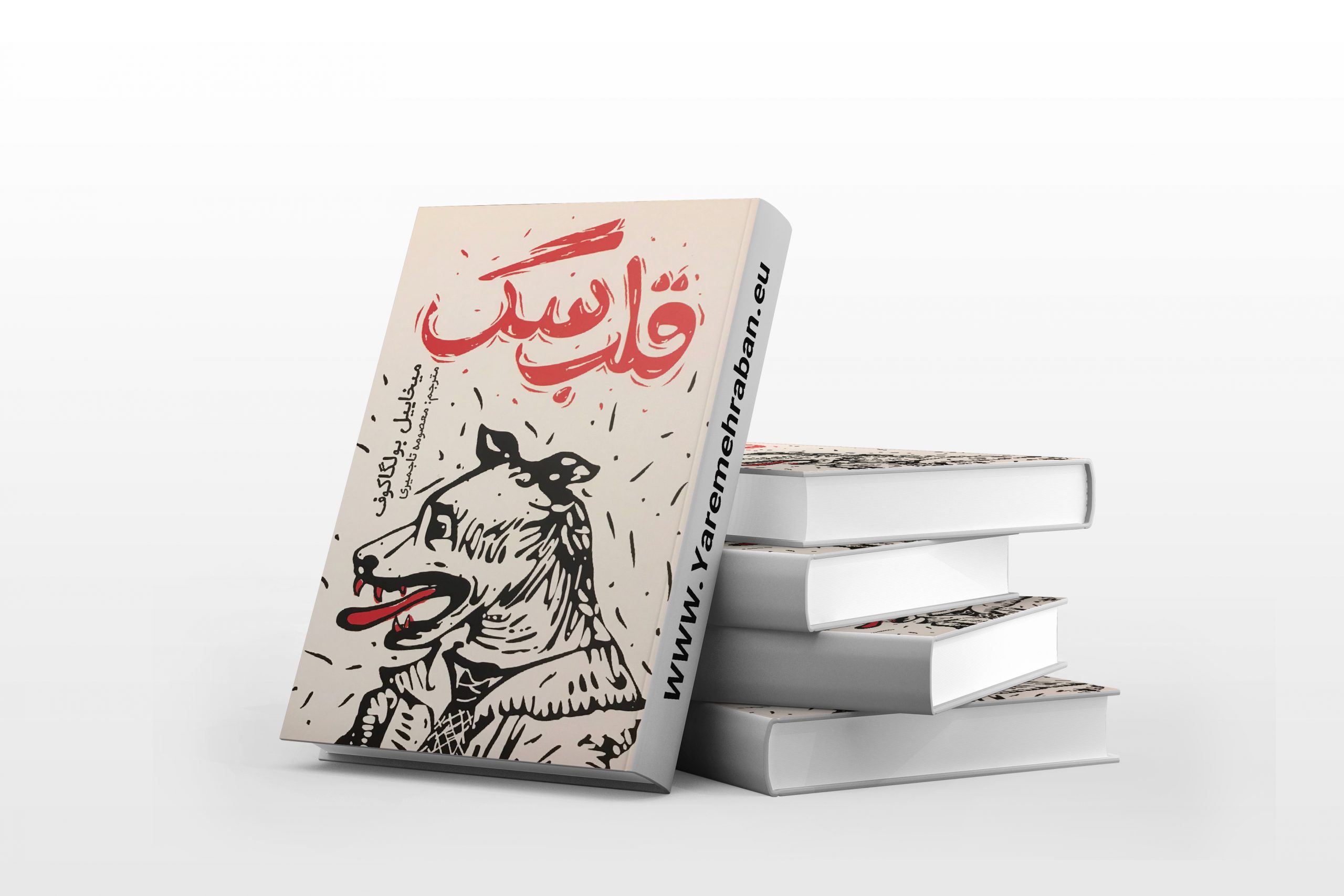
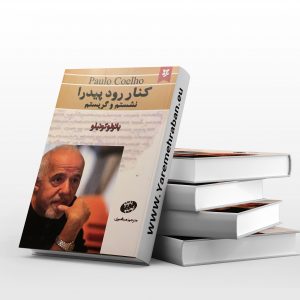





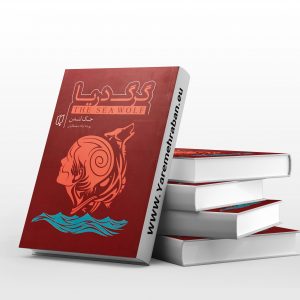

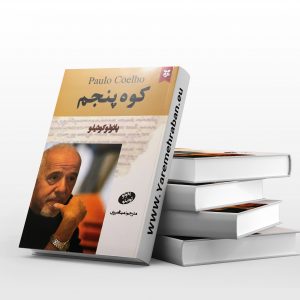

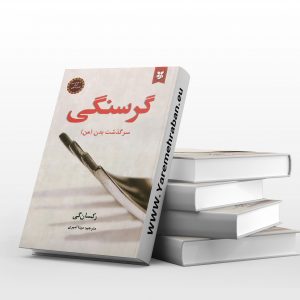

Reviews
There are no reviews yet.